


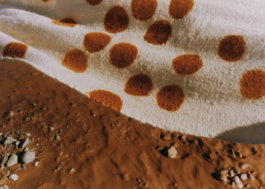
This project is carried out in collaboration
with the memòri lab association.

Henna



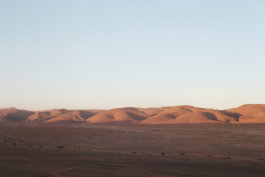
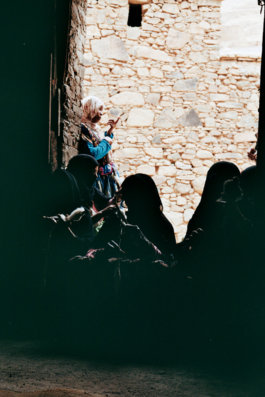
Imi

Raw fleece
For this edition, we discover the contrasting and spiritual craftsmanship of henna vegetable dye.
This coloring is rich in meaning: imbued with spirituality, it celebrates real rites of passage for women and acts as a protective talisman for whoever wears them.









Working together
Adghar

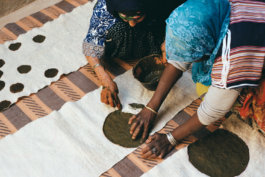
Henna
As a tribute to an anchorage to the land and to the proverb: “The country where the stones know you is better than the country where the people know you”. Here, in Amazigh land where we are warmly welcomed, we are more Imazighen (plural of Amazigh) than Berbers. In the literal sense, "free men", who see beyond borders.

Traditionnal jewelry

Fatima & Salwa

Traditionnal veil











The women of the Amazigh Feija community spin and hand-weave the endemic wool of Siroua. All the steps to make a textile piece are entirely manual and local: from the raw fleece to carding and spinning, including assembly on a vertical loom, a high-heel ancestor of the horizontal loom (without using shuttles).
For the dye, the artisans use the leaves of a traditional dye plant grown in the oasis of the arid regions of southern Morocco in micro-farms practicing agro-ecology.
They apply an ancestral recipe to textiles, enriched with molasses, boiled pomegranate and sometimes some bark picked from the mountains. The range of colors is nuanced, more flamboyant on the first pass, it browns with the number of pauses. The artisans trace and draw with their fingers and wooden rods.

Spinning
This unique know-how is transmitted from generation to generation, from mother to daughter. In this village at the gates of the desert, women are the guardians of this tradition. They perpetuate and give life to a form of textile unique in the world. An intangible cultural heritage that must be protected and enhanced.



Last stage of the Itinérance, meeting in Taliouine with Rachid Bihane, former educator of the Youth Initiatives Forum of this city.
Rachid succeeded in bringing together young talents from the region, members of the association. The FIJ association was created in 2012 by young people and for young people in the city: with the aim of supporting, guiding and training rural youth to exercise active citizenship.








Sheïma


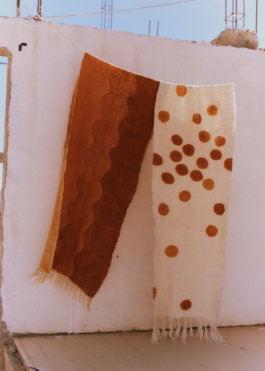


Anti-Atlas
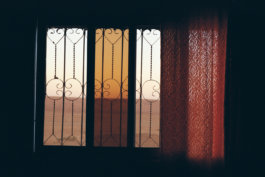



This project is carried out in collaboration
with the memòri lab association.

Henna





Imi

Raw fleece
For this edition, we discover the contrasting and spiritual craftsmanship of henna vegetable dye.
This coloring is rich in meaning: imbued with spirituality, it celebrates real rites of passage for women and acts as a protective talisman for whoever wears them.









Working together
Adghar


Henna
As a tribute to an anchorage to the land and to the proverb: “The country where the stones know you is better than the country where the people know you”. Here, in Amazigh land where we are warmly welcomed, we are more Imazighen (plural of Amazigh) than Berbers. In the literal sense, "free men", who see beyond borders.

Traditionnal jewelry

Traditionnal veil

Fatima & Salwa











The women of the Amazigh Feija community spin and hand-weave the endemic wool of Siroua. All the steps to make a textile piece are entirely manual and local: from the raw fleece to carding and spinning, including assembly on a vertical loom, a high-heel ancestor of the horizontal loom (without using shuttles).
For the dye, the artisans use the leaves of a traditional dye plant grown in the oasis of the arid regions of southern Morocco in micro-farms practicing agro-ecology.
They apply an ancestral recipe to textiles, enriched with molasses, boiled pomegranate and sometimes some bark picked from the mountains. The range of colors is nuanced, more flamboyant on the first pass, it browns with the number of pauses. The artisans trace and draw with their fingers and wooden rods.

Spinning
This unique know-how is transmitted from generation to generation, from mother to daughter. In this village at the gates of the desert, women are the guardians of this tradition. They perpetuate and give life to a form of textile unique in the world. An intangible cultural heritage that must be protected and enhanced.





Last stage of the Itinérance, meeting in Taliouine with Rachid Bihane, former educator of the Youth Initiatives Forum of this city.
Rachid succeeded in bringing together young talents from the region, members of the association. The FIJ association was created in 2012 by young people and for young people in the city: with the aim of supporting, guiding and training rural youth to exercise active citizenship.








Sheïma






Anti-Atlas
